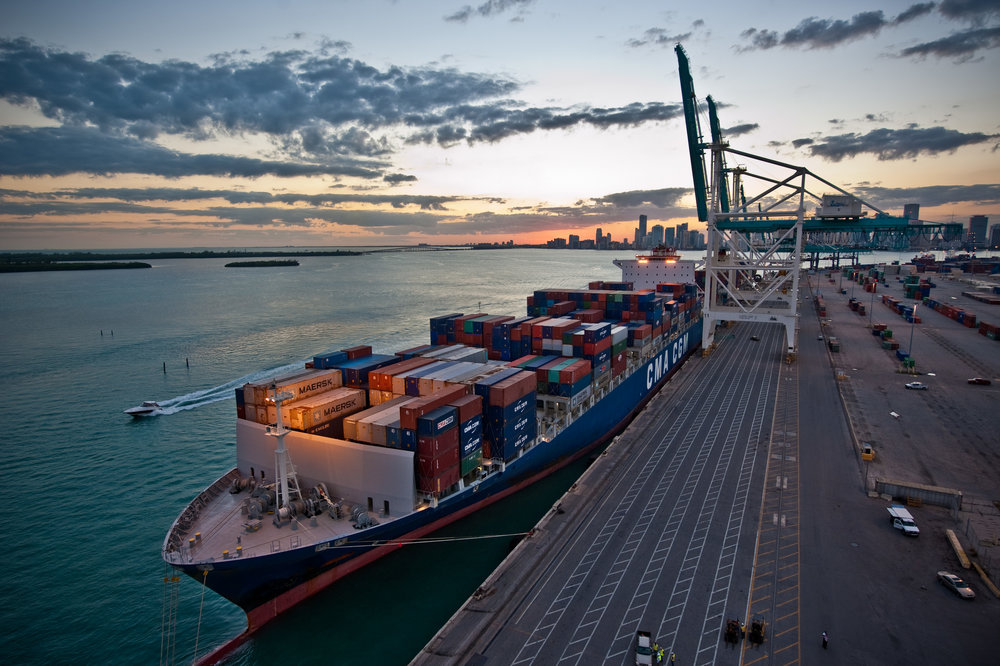Positive trade balance; pros and antis

The Islamic Republic of Iran Customs Administration’s recently released data put the country’s non-oil exports larger than imports in the previous Iranian calendar year (March 2015-March 2016), marking the country’s first-ever positive balance of trade since the 1979 Islamic Revolution.
By Haniyeh Sadat Jafariyeh
However, the publicized positive balance of trade has raised a chorus of criticism from among the governmental and non-governmental officials as well as domestic tradesmen since the announced figures confirmed a drop of 16.11 percent in exports and 22.53 percent in imports, compared to the preceding year.
The positive record nevertheless has its own advocates who regard the unprecedented positive balance as a turning point in Iran’s economic history.
According to the data, $42.415 billion worth of goods were exported last year, while imports stood at $41.499 billion, resulting in a $916 million trade surplus. In terms of weight, exports and imports reached 93.520 million tons and 35.70 million tons respectively, documenting a 7.18 percent and an 18.47 percent drop compared with the figures two years ago.
As the critics mainly argue, referring to official data, more than $20 billion of goods were illicitly trafficked into the country in the said time. The volume, as they conclude, suggests that smugglers were four times more active than traders.
“If the said $20 billion of smuggled goods is added to the $42.415 billion of imported ones, the achieved figure will exceed $62 billion, turning the trade balance negative,” Chairman of Tehran Chamber of Commerce, Industry, Mines, and Agriculture Yahya Ale-Es’haq told Eghtesad radio channel on April 4.
Moreover, despite the declared positive record, Iran’s stake in the global trade decreased by 20 percent in the past year and reached $120 billion, which was less than 0.3 percent of the world’s total volume of trade.
“The share should ideally stand at $380 billion, when comparing the country’s population with that of the whole world,” Deputy Head of Iran-China Chamber of Commerce Majid-Reza Hariri told Fars news agency on March 5.
As some antis additionally discuss, including the chairman of the Iran-Russia Joint Chamber of Commerce Asadollah Asgaroaldi, and the board member of the Iran-China Joint Chamber of Commerce, Ferial Mostofi, the positive balance of trade should be interpreted as the premier outcome of the sharp drop in imports volume, not the increase in exports.
Low amount of liquidity, dominant economic recession, tax issues which hinder exports, foreign exchange fluctuations, and low volume of domestic quality products stand among the main reasons that some commerce officials list to devalue the obtained positive balance.
Contrary to what critics argue, adherents of the positive balance of trade speak of a set of conceivable reasons in relation with the achieved trade surplus. They emphasize that Iran is the only country in the globe where non-oil exports are excluded from total exports, if not, the figure would have always remained positive.
Iran, as the proponents boast, could manage to achieve the positive trade balance last year when its economic activities were largely confined by the international financial embargo over its nuclear program.
The factor noticeably limited the country’s international trade exchanges, Valiollah Afkhamirad, the head of the Trade Promotion Organization, told Fars news agency on March 4.
Global economy suffered from the collapse of oil prices in 2015 which had a high impact on cutting Iran’s exports and imports. Regarding the drop in imports last year, Afkhamirad blamed the fall of oil prices as the main cause, not the reduction of imports of raw materials, as some critics highlight.
According to official data, the average price of exported goods rose 1.22 percent per ton to stand at $461, whereas the price of imported commodities dropped by 5 percent and averaged at $1,183 a ton.
Some pros of the positive trade balance idea say the good news is that the hike in the average price of exported goods per ton determines a rise in the share of imported raw materials.
Other advocates of the positive record assume that the 50-percent decrease in the imports of vehicles with engine displacement of more than 2,500cc and durable consumer goods, as well as the 18-percent fall in imports of low-quality Chinese products among the main causes for the 22-percent drop of imports last year. As they express, both factors submit the efficiency of applied economic policies of President Hassan Rouhani’s administration during the said time.
The proponents underline the remarkable 52.42-percent reduction in exports of gas condensates as well as the two-percent cut in exports of petrochemicals and other goods the consequences of the collapse in oil prices, which had a significant impact on the decline of Iran’s non-oil exports.
While, instability of foreign exchange rates, specifically oscillations in the last two months of the past year, played a vital role in thwarting Iranian tradesmen from expanding their activities and exports, as well.
Furthermore, the economy of some of Iran’s major trading partners - mostly its neighbors - during the previous year was partially impressed the country’s total exports.
“Iraq cannot afford to pay the price for the imported goods and services from Iran due to oil prices fall, while the other major partner, Russia, is dealing with the sharp slide in its currency and made Iranian businessmen in doubt about choosing it as a safe export destination,” Afkhamirad said.
Having in mind what pros and cons of the positive trade balance debate over and not being biased to discover whose reasons outweigh those of the other’s, a long path seems to remain for the Iranian government to achieve a more genuine positive trade balance which would be palpable in the domestic market than in official documents.
The target could be hit via improving the business environment, providing non-cash incentives for exporters, building safety nets for quality products which can compete with foreign rivals, and most importantly taking actionable strategies for combating trafficking of goods.
